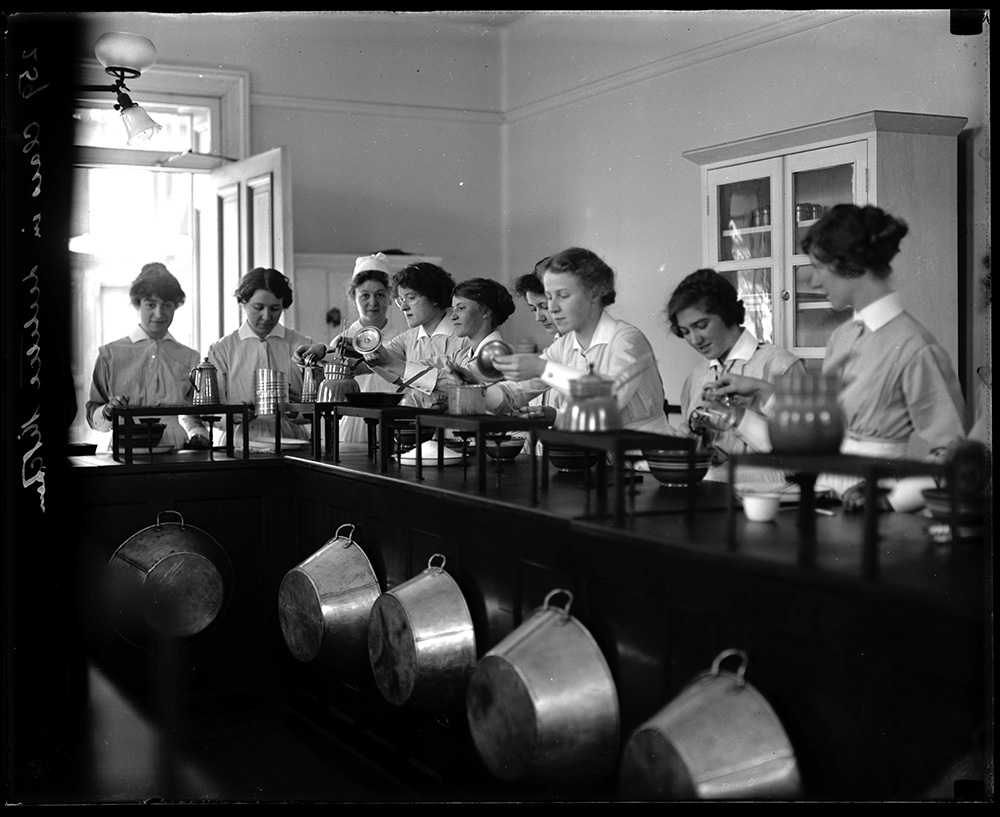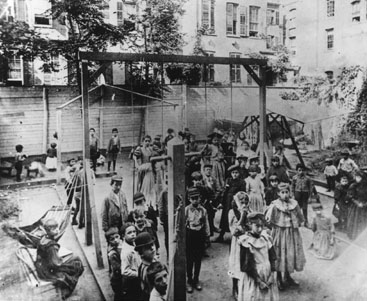
Student nurses on Blackwell’s Island, 1916. Orrin Sage Wightman Collection, New-York Historical Society Library.

Student nurses on Blackwell’s Island, 1916. Orrin Sage Wightman Collection, New-York Historical Society Library.
In the early 1900s, women didn’t have much of a voice. Women weren’t allowed to vote and jobs were very limited. After the Civil War, there was a huge demand for nurses which opened a lot of job opportunities for women who needed jobs. In 1873 many new training programs were open to women who took an interest in the medical field. Since becoming a doctor was typically a “male profession,” women resorted to becoming nurses instead. Women who had ambitions to become nurses had to undergo 2-3 years of training in patient care and cleanliness. Unfortunately, after graduating it was difficult to become a nurse in a hospital because many to most hospitals were not hiring nurses fresh out of school. Hospitals were having student nurses serve on bedside duty as opposed to graduated nurses. Because of the lack of hiring in hospitals, graduated nurses would go into the private nursing field.
Private nurses were hired by patients to usually pay visits at home when needed. Many people had access to some sort of institution or hospital, so there wasn’t a high demand for private nurses. Nurses didn’t have much of a purpose in the early twentieth century until Lillian Wald created the Henry Street Settlement. The settlement was a breakthrough in the medical field because it gave people without access to a health center medical attention. The settlement was also ground breaking for nurses without jobs. Many saw the benefits of the settlement and many new institutions like Wald’s were built. Nurses finally had a purpose and a voice again. In the 1920’s-1930’s, hospitals began an expansion of patient beds making the employment of nurses extremely important in hospitals. There was a time when it seemed that women in the medical field were not necessary, but when Lillian Wald established The Henry Street Settlement, there was a high demand for nurses again.

Backyard of a Henry Street Branch, 1915. Jewish Women's Archive.
The Henry Street Settlement was founded in 1893 by Lillian Wald. Wald wanted to have a health institution for the poor immigrant community of the lower east side. The Henry Street Settlement was a place where residents could receive proper health care and hot food. Not only did the settlement provide services to many, but it also allowed for recreational activities. Small children would go to the settlement to play music and learn to speak better english. The settlement was also successful because it gave nurses jobs again. Settlements were opened across America and thanks to Lillian Wald, hundreds of nurses were utilized.